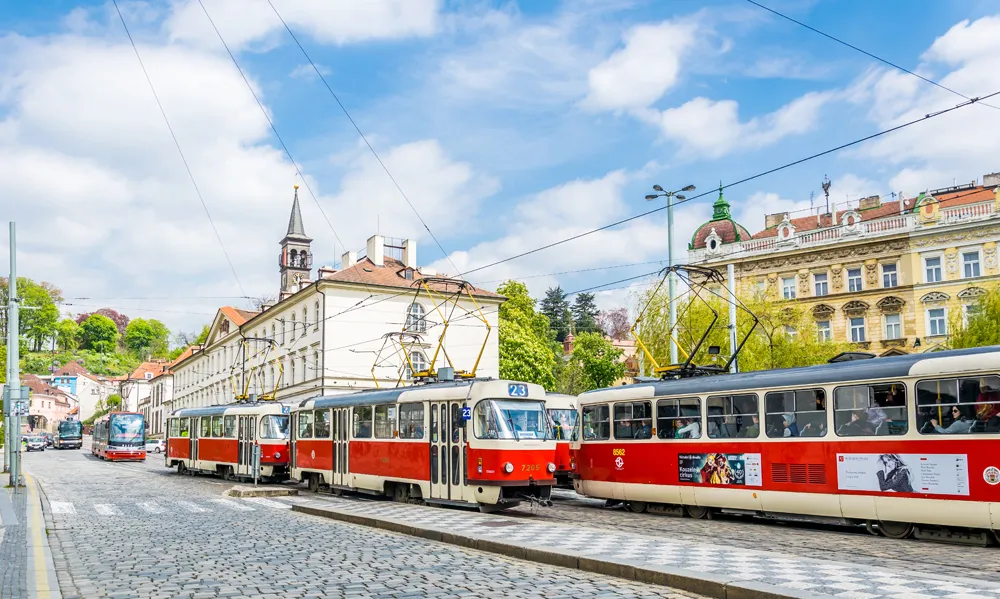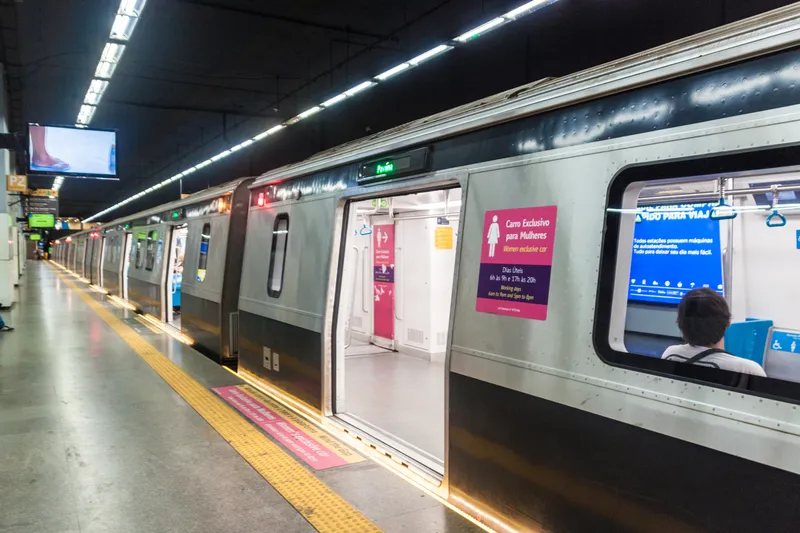New projections, released today by the International Transport Forum (ITF) at the OECD during the COP20 climate change negotiations in Lima, Peru, highlight a critical choice for policy makers: whether to pursue urbanisation based on public transport or on private transport with cars and two-wheelers.
Big cities in China, India and Latin America with over 500,000 inhabitants will more than double their share of world passenger transport emissions by 2050 to 20 per cent (2010: 9 per cent), if current urba
December 4, 2014
Read time: 4 mins
New projections, released today by the 998 International Transport Forum (ITF) at the 7353 OECD during the COP20 climate change negotiations in Lima, Peru, highlight a critical choice for policy makers: whether to pursue urbanisation based on public transport or on private transport with cars and two-wheelers.
Big cities in China, India and Latin America with over 500,000 inhabitants will more than double their share of world passenger transport emissions by 2050 to 20 per cent (2010: 9 per cent), if current urban transport policies remain unchanged. Thirty-eight per cent of the total growth in world surface transport passenger emissions to 2050 will come from big cities in these three regions in such a business-as-usual scenario.
Sustained policies that promote either private or public urban transport lead to very different mobility futures, as projections for modal shares in 2050 show:
In India, a private transport-oriented policy for cities would lead to two-thirds (67 per cent) of urban mobility being covered by car traffic, with motorised two- and three-wheelers (17 per cent, 5 per cent) and public transport (11 per cent) accounting for only a third; with pro-public transport policies, the share of buses and other public transport forms could be almost four times as high and reach 39 per cent - practically on par with car travel (40 per cent). Two- and three-wheelers would cover 12 per cent and 9 per cent respectively.
In Latin America, a public transport-oriented policy would result in a 50 per cent share for public transport, 44 per cent for cars and 7 per cent for two-wheelers in big cities. Private transport-oriented policies would lead to an 82 per cent share for cars, 11 per cent for public transport, and 6 per cent for two-wheelers.
In China, an urban policy with few new roads and stringent expansion in car ownership restrictions would lead to a 44 per cent share for cars and a 34 per cent for public transport; with two-wheelers taking 10 per cent. In the absence of these measures, cars would account for 78 per cent of urban mobility, with two-wheelers representing 13 per cent and public transport only 9 per cent of the modal split.
These alternative scenarios have profound impacts for the contribution of urban transport to global emissions, according to the ITF projections:
In India, policies that favour car use could increase emission growth by 47 per cent. Policies that favour public transport could reduce it by 37 per cent. In Latin America, policies that encourage private transport would add 35 per cent, while public transport-driven urbanisation could reduce emissions growth by 31 per cent. In China, emissions would grow by 19 per cent above 2010 levels if cities were to support individual transport, but fall by 26 per cent assuming a shift to public transport.
Understanding context, drivers, and effects of policies is crucial to achieving the desired results. For instance, if a ban on motorised three-wheelers in Indian cities reduced their number by 80 per cent by 2050, this would lead to a mere 4 per cent reduction in CO2 emissions as people switch to two-wheelers. Reduced mobility for others would impose a social cost.
The ITF Urban Transport Model now allows testing policies that focus on avoiding unnecessary mobility and shifting mobility to modes that emit less (‘avoid-shift’), rather than on the effects of improved technology for emissions mitigation.
“One of the biggest challenges for a global mitigation framework is to encompass a wide range of coherent transport interventions while moving towards better methodologies for measuring, reporting and verification”, commented José Viegas, secretary-general of the International Transport Forum at the OECD.
“It is desirable that countries develop their mitigation actions as part of a wider urban sustainable policy strategy instead of expecting all other externalities to be automatically reduced as a co-benefit of CO2 mitigation.”
Big cities in China, India and Latin America with over 500,000 inhabitants will more than double their share of world passenger transport emissions by 2050 to 20 per cent (2010: 9 per cent), if current urban transport policies remain unchanged. Thirty-eight per cent of the total growth in world surface transport passenger emissions to 2050 will come from big cities in these three regions in such a business-as-usual scenario.
Sustained policies that promote either private or public urban transport lead to very different mobility futures, as projections for modal shares in 2050 show:
In India, a private transport-oriented policy for cities would lead to two-thirds (67 per cent) of urban mobility being covered by car traffic, with motorised two- and three-wheelers (17 per cent, 5 per cent) and public transport (11 per cent) accounting for only a third; with pro-public transport policies, the share of buses and other public transport forms could be almost four times as high and reach 39 per cent - practically on par with car travel (40 per cent). Two- and three-wheelers would cover 12 per cent and 9 per cent respectively.
In Latin America, a public transport-oriented policy would result in a 50 per cent share for public transport, 44 per cent for cars and 7 per cent for two-wheelers in big cities. Private transport-oriented policies would lead to an 82 per cent share for cars, 11 per cent for public transport, and 6 per cent for two-wheelers.
In China, an urban policy with few new roads and stringent expansion in car ownership restrictions would lead to a 44 per cent share for cars and a 34 per cent for public transport; with two-wheelers taking 10 per cent. In the absence of these measures, cars would account for 78 per cent of urban mobility, with two-wheelers representing 13 per cent and public transport only 9 per cent of the modal split.
These alternative scenarios have profound impacts for the contribution of urban transport to global emissions, according to the ITF projections:
In India, policies that favour car use could increase emission growth by 47 per cent. Policies that favour public transport could reduce it by 37 per cent. In Latin America, policies that encourage private transport would add 35 per cent, while public transport-driven urbanisation could reduce emissions growth by 31 per cent. In China, emissions would grow by 19 per cent above 2010 levels if cities were to support individual transport, but fall by 26 per cent assuming a shift to public transport.
Understanding context, drivers, and effects of policies is crucial to achieving the desired results. For instance, if a ban on motorised three-wheelers in Indian cities reduced their number by 80 per cent by 2050, this would lead to a mere 4 per cent reduction in CO2 emissions as people switch to two-wheelers. Reduced mobility for others would impose a social cost.
The ITF Urban Transport Model now allows testing policies that focus on avoiding unnecessary mobility and shifting mobility to modes that emit less (‘avoid-shift’), rather than on the effects of improved technology for emissions mitigation.
“One of the biggest challenges for a global mitigation framework is to encompass a wide range of coherent transport interventions while moving towards better methodologies for measuring, reporting and verification”, commented José Viegas, secretary-general of the International Transport Forum at the OECD.
“It is desirable that countries develop their mitigation actions as part of a wider urban sustainable policy strategy instead of expecting all other externalities to be automatically reduced as a co-benefit of CO2 mitigation.”









